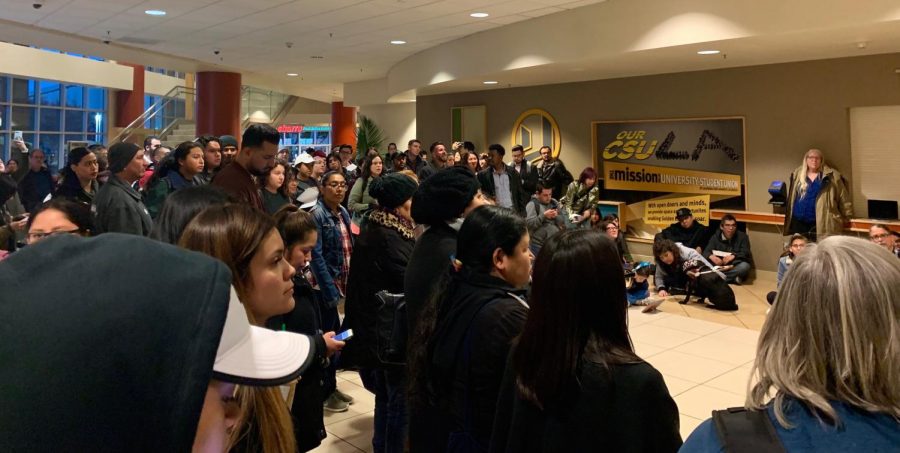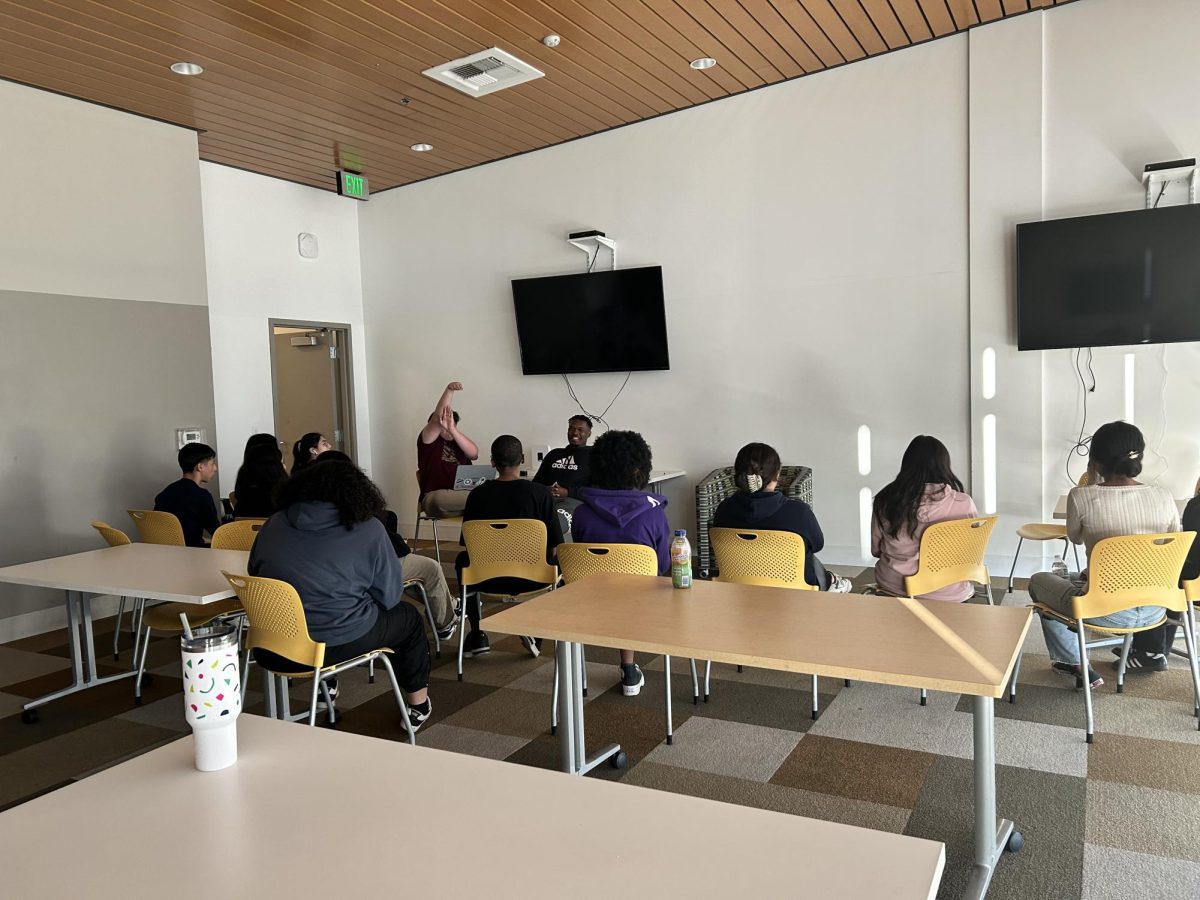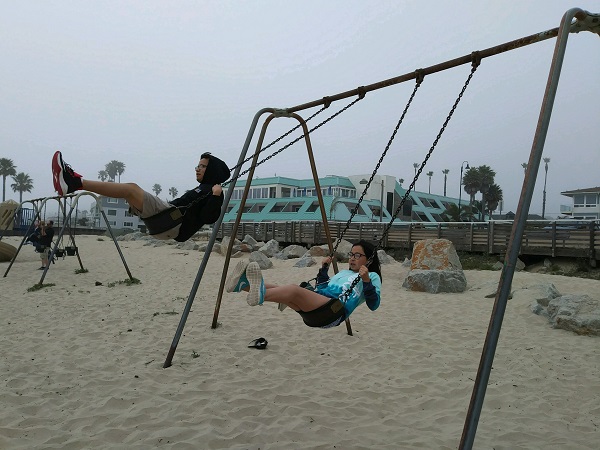Cal State LA’s new proposal to raise admissions standards isn’t due to the Cal State University system chancellor yet, but it’s apparently already discouraging some community college students who were preparing to transfer.
“This situation is disappointing,” said Rose Gonzales, a third-year at East Los Angeles College. “Most of us planned on going to Cal State LA. You know, we counted on getting in, but now with impaction, we won’t. We’ll just end up here [in community college] longer, so what’s the point?”
The Admissions Proposal Plan, also called impaction, would change admissions criteria at Cal State LA starting in Fall 2020 in order to reduce the number of students admitted. It was floated recently by President William A. Covino in consultation with other administrators and it is due to the chancellor’s office by March 15. The main concern of students and educators in nearby communities is that 600 prospective students – who would have automatically gained admission in the past – will no longer be admitted.
In response to some of the criticism, Cal State LA President Bill Covino announced Wednesday that two changes to the proposal will be made. The university will continue offering “local preference to students from the community colleges that we have historically served” and allowing “a limited number of non-CSU eligible students access to alternative paths to admission,” including keeping the Educational Opportunity Program, which aims to provide greater access to higher education for low-income, first generation and historically disadvantaged students.
Eastside educators taken aback
Educators on the Eastside said they were “surprised” by the impaction proposal, saying they had heard about it just weeks before from peers.
“[This is] a belligerent move,” said Alejandro Araujo, the college and career coordinator for Promesa Boyle Heights, a social justice community group that works directly with high school and middle school students on the Eastside. “No counselors or staff across the Eastside knew anything about it and it was not shared with the local community.”
Araujo, who lives on the Eastside, said he worries that high school juniors will be affected by this plan when applying for college next year — since most of his students end up at Cal State LA.
“It was very clear to me and to many members of the community — the parents, the students — that this impaction did not have in mind the voices of the community or the students,” he added.
Over 1,000 students — or nearly 4 percent of the student body — and 105 faculty and community members have signed a petition opposing the impaction plan and are asking for a one-year moratorium.
Meanwhile, administrators say they’re working hard to push for more state funding because the university currently has more than 5,000 individual students that it does not receive state dollars for. If additional funds were approved, there is even a possibility under impaction of growing the student body in the years to come. “Many of the students’ stories we heard over the last month demonstrate both the value of access to Cal State LA and concerns about lack of services…Without state funding for more of our students, we cannot meet these needs well,” according to a statement from Provost and Vice President for Academic Affairs Lynn Mahoney.
Impact on diversity
Cal State Long Beach (CSULB) is one of six CSUs that has been declared “impacted” and it has raised admissions criteria over the years to manage its enrollment. That has led to the school becoming increasingly more selective and turning away more students each year.
“When we look at the effects of impaction at other CSUs, there is strong evidence that impaction leads to declines in the admission of working-class students of color…Cal State Long Beach’s approach to impaction significantly reduced the number of Black, LatinX, and Native American students,” said Alejandra Marchevsky, a liberal studies professor at Cal State LA who leads the Women’s, Gender and Sexuality Studies program.
In an effort to reconcile differences measuring changes in diversity after impaction at Cal State Long Beach – figures provided by administrators at Cal State LA, Cal State Long Beach and the “No to Impaction” group, which is made up of Cal State LA students, staff and faculty – Community News analyzed CSULB data that goes back as far as Fall 2006 and found that the admission rate – which is the number of students accepted compared to the number who applied – declined by 10 percentage points for African American students at Cal State Long Beach between 2006 and 2018, and it declined 18 percentage points for LatinX students.
A National Student Clearinghouse report indicates that impaction at CSULB began in 2002 but university officials say “full impaction” didn’t happen until Fall 2013.
Similar to information from Cal State Long Beach and Cal State LA administrators, Community News’ analysis found some diversity measures have improved more recently.
From Fall 2012 to Fall 2018, the LatinX population – as a percentage of the entire student body – has increased by nearly 18 percent while the African American population has decreased by more than 20 percent, according to a Community News analysis of CSULB data.
“Cal State Long Beach has seen an increase in both Pell students and in LatinX students, as they, too, offer local students who meet their minimum admission criteria guaranteed admission,” according to Mahoney’s statement.
Impaction opponents are concerned about the possible effect on African American students.
“Cal State LA has already been raising its admission criteria, and excluding growing numbers of students. In particular, the percentage of Black students in the incoming class dropped from 4 percent to 2 percent in the past two years,” Marchevsky said.
The decline is less dramatic — a decrease from 6 percent to 5.3 percent from Fall 2016 to Fall 2018 – when including graduate students and students who identify as Black and another racial or ethnic category such as LatinX and Black, according to data provided in Mahoney’s statement.
Informing the community
Cal State Long Beach can do more to better inform the community about impaction-related changes, said Xochitl Lopez, a former student advisor and the current assistant director of International Students & Scholars at Cal State Long Beach.
“CSULB needs to provide updates on impaction in a timely manner to advise prospective students properly,” said Lopez. “I believe that it is important for CSULB to continue enhancing their outreach efforts and informative sessions to prospective students and the surrounding high schools.”
Despite concerns about impaction in Long Beach, Lopez said university officials are handling the situation as well as possible.
“I believe that CSULB has done a good job to provide access for underrepresented students,” said Lopez. “Outreach efforts from the campus has given high school counselors…information to provide detailed orientation to students.”
That is one thing Cal State LA would need to do if impaction is adopted, experts say.
Dreams compromised or abandoned
Some students in the area having been taking extreme measures to land a spot on CSU campuses that are increasingly difficult to get into, according to Dairieonna Sullivan, a former admissions assistant at Rio Hondo College in Whittier.
“With the majors being impacted, students would just pick any major that they could since they could not apply for the major they wanted to transfer out quicker,” Sullivan said.
What’s worse is that some may abandon pursuing their dreams of attending college.
“I think one of the biggest issues was students thinking that since the CSUs were impacted, what was the point of trying to get in?” she said. “I think it’s always being put in their heads that there is always someone better than them, with better grades.”
This story was originally published in the print edition of the University Times on March 5, 2019. It was posted to the web on March 8 and updated to include new changes to Cal State LA’s impaction proposal in response to community feedback and to include information provided by Cal State Long Beach.
Community News reporters are enrolled in JOUR 3910 – University Times. They produce stories about under-covered neighborhoods and small cities on the Eastside and South Los Angeles. Please email feedback, corrections and story tips to [email protected].








